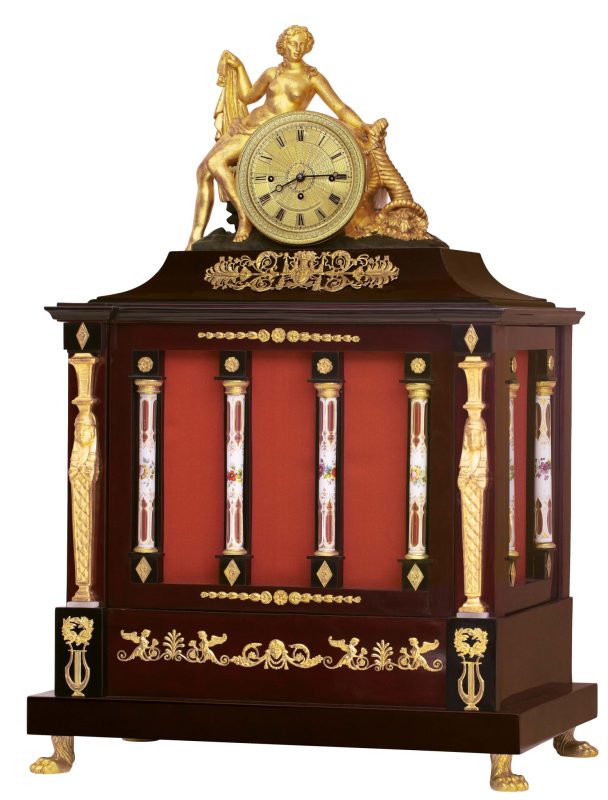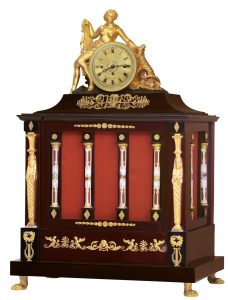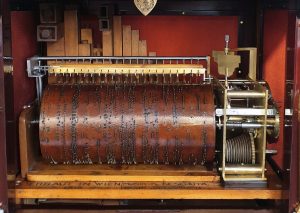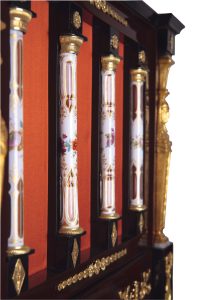Vienna, 1815 date and masters noted on the organ movement
- Case
- polished mahogany veneer, partly ebonized, ormolu mounts, two gilt caryatid-hermae made of carved lime wood, gilt lion paw feet, columns made of Bohemian overlay glass, finial in the shape of goddess Fortuna with cornucopia made of gilt lime wood
- Dial
- engine turned bronze
- Movement
- clockwork: anchor escapement, Viennese grande sonnerie on bells, indication of date, starter for the pendulum, repeater, turn-off for strike, duration of two days (plus power reserve) organ movement: spring driven, original barrels, 22 pipes, automatic release on the hour, repeater, turn-off
- Measurements
- 28 ¾×19 ¾×12 ¼ in
The exceptional importance of Viennese musical clocks during their period of origin is today evidenced by the fact that immortal composers such as Haydn, Mozart and Beethoven all created music specially for this invention. The organ automatons, which included pipework, bellows and exchangeable rollers, enabled passages and tempi that often surpassed the capabilities of flesh-and-blood musicians. The success story of the Viennese musical clock can be attributed to the unique conditions that prevailed in the metropolis on the Danube around the year 1800: this was where superb master clockmakers, excellent musical movement makers, gifted cabinetmakers, and, last but not least, an incomparable number of famous composers were all to be found at one point in time.
In 1823, Stephan von Keeß opined, “Although these flute clocks were already known in France and perhaps in several places in Germany […] before they became known in Vienna, it is after all largely thanks to the Viennese artisans […] that we see the high level of perfection that these instruments have now attained.”
Self-playing musical devices had been fabricated even during the Renaissance period. They decorated the Kunstkammers (chambers of art and curiosities) of Europe’s rulers. In the second half of the 18th century, mechanical musical instruments became the “must have” of the royal courts. They were regarded as works of art for which no costs or effort were spared on their production, and which often served as gifts for emperors and kings. In Vienna, they became famous in particular thanks to Count Deym, one of the most glamorous personalities of the time. Following a duel, he was forced to leave Austria, but returned in 1780 under the alias of Joseph Müller and opened an art gallery, where musical automatons could also be admired. These were obviously in tune with the popular taste of the time and were soon being crafted by local masters for an elite, usually noble clientèle. The cases for the Viennese musical clocks were of the very highest quality, with an innovative variety of shapes. The pipework’s and exchangeable rollers were usually made of wood; the musical movements could be either spring or weight driven.
The indescribable luxury of a high-quality mechanical musical instrument that could be played at any time becomes evident when we observe the elaborate design and complex movement technology of the few Viennesemusical clocks still preserved today



